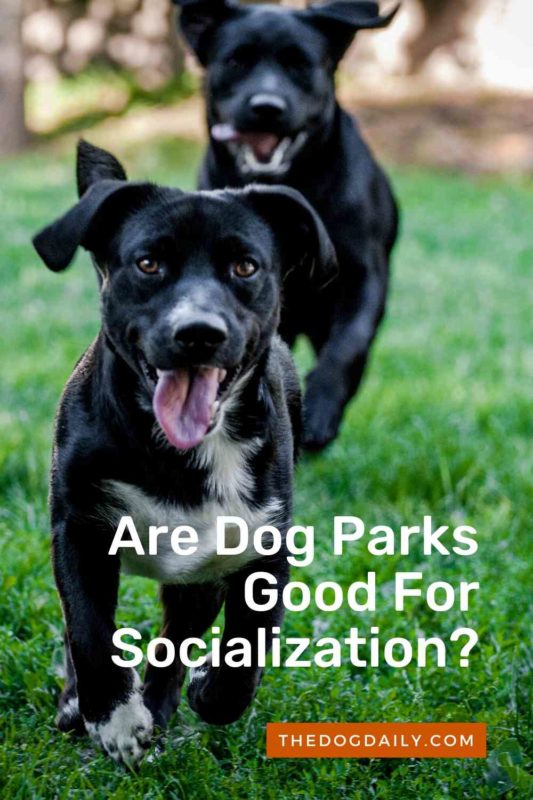Are Dog Parks a Good Idea?
Like a doting parent, Anne Hendrickson recalls when her dog, Riley, was just a puppy and she started taking him to off-leash dog parks in Minneapolis. “It was so much fun,” Hendrickson says. Riley met a group of playmates. There were Dallas, Zuma, and others. “They would meet and run,” Hendrickson says, “and wrestle and chase and play.”
Hendrickson is convinced of the benefits of off-leash play after seeing how happy it makes Riley and her other two dogs and how well behaved the dogs are in the house afterward. She’s started a dog daycare business, Downtown Dogs Minneapolis, where pups play off-leash. She tells clients that off-leash play may help correct many behaviors at home, such as destructive chewing or digging, resulting from boredom or lack of exercise.
Hendrickson is also the health and safety expert of Dog Grounds, a non-profit in Minneapolis that fights for more public land for off-leash play. She’s part of an urban movement that has caught on from New York City to Seattle, in which dog owners have answered leash laws by fighting for more off-leash parks. Dog owners also set up “playgroups” where pets can romp and socialize. Whenever you put two or more animals together, however, there are risks. Here’s how to make sure that off-leash play is a positive experience for your pet:
Are Dog Parks Good For Socialization?
It’s Important to Know Your Dog’s Temperament
Not all dogs are cut out for dog parks, says Robin Bennett, a dog trainer in Stafford, Va., and author of Off-Leash Dog Play: A Complete Guide to Safety and Fun (Dogwise). “The best thing to ask yourself is, ‘Does my dog enjoy the company of other dogs?'” Bennett says. “Just as with people, some dogs prefer to have just one or two friends, while others are more like social butterflies.”
When starting at a new playgroup or venturing to a new off-leash park, look for signs of stress in your dog, Bennett advises. “If the dog’s body stiffens up, it may be a bit worried,” Bennett says. Another sign of stress is if the dog was formerly panting with an open mouth and suddenly stops and closes its mouth. “The dog may be holding its breath and saying, ‘I’m not sure of this,'” Bennett says.
Do Dog Parks Make Your Dog Sick?
Just like with humans, there are some health risks you should watch out for when your dog is socializing in a group. Infectious diseases such as Kennel Cough and Canine Influenza are easily spread whenever your dog is socializing with other dogs, and the dog park is no exception. Ensuring that your dog is up to date with his vaccinations gives him the best chance of staying healthy.
Fleas and Ticks are parasites that can be passed on to other dogs during play. Luckily there is a range of preventative and treatment options for you and your dog.
How Do I Find Dog Parks Near Me?
There is a growing variety of off-leash parks and playgrounds in communities around the country. Most city or county governments will have information on their websites about public parks that allow dogs to be off-leash. Also, websites such as “Off-leash meetup” will enable you to search for groups or locations by zip code. If you can’t find an organized playgroup, ask your veterinarian, breeder, or other dog owners that your pup sniffs during its walks. If you have a fenced-in yard, you might even consider starting such a group yourself.
Introduce your dog to off-leash slowly. If your dog has never been to an off-leash park before, avoid peak hours. “The first time you bring your dog, go at a time when it isn’t hectic, usually early in the morning or on a weekday,” suggests Hendrickson. “This way, your dog can sniff and explore on its terms.”
Bennett suggests first introducing your dog to another dog, one on one. “Make sure to introduce your dog to another that is relatively calm and isn’t going to overwhelm your pet,” Bennett says. Look for a positive greeting ritual. Dogs tend to approach each other in an arc and sniff each other’s faces and necks before making a beeline for the behind, Bennett says.
Watch Your Dog For Signs of Stress or Aggression
Monitor your pup closely for a reaction to other dogs. Healthy play behavior involves exaggerated and repetitive movements, Bennett says. These may include chasing, jumping in the air, moving quickly to the left or right, and bowing down with the front paws.
Be on the alert for dogs that become rough or aggressive. “Any time two dogs are off-leash together, there is a risk of injury,” Hendrickson says. Cuts and scratches are likely. However, bullying is a possibility at dog parks. It can be challenging to spot because dogs bite and wrestle and pin each other in play. Hendrickson recommends the “Bully Test.” Remove the alleged aggressor and watch the “bottom dog’s” reaction to see if it continues to try to play or takes the opportunity to getaway. If your dog wants to flee, it’s time to leave.
Follow Dog Park Etiquette
A dog trainer or other expert sometimes sponsors dog daycare situations or organized playgroups. At other times, dog owners are on the honor system. You should abide by the following general rules:
- Never let your dog play with other dogs if they have an infectious disease, such as kennel cough, or worms, experts say. Make sure your pet is protected and up to date on its vaccinations.
- Don’t take a dog to an off-leash park if it doesn’t have basic obedience training, such as coming when called, Bennett stresses.
- Bring plastic bags to clean up after your dog, Hendrickson says.
- If your dog shows aggression toward others, take it out of the park, Bennett says.
- Don’t bring food or doggie treats into the dog park, Bennett says. Other dogs may want treats, too. One thing dogs will fight over is food.
Dog Park Etiquette Questions
Like the gym or the workplace, a dog park is a social place with its own set of proper etiquette guidelines. But what that means in a dog park isn’t always obvious. With the help of Charlotte Reed (author of The Miss Fido Manners Complete Book of Dog Etiquette) and Cheryl Smith (a certified dog behavior consultant and author of Visiting the Dog Park: Having Fun, Staying Safe), we set the record straight on some crucial aspects of dog park etiquette.
Q: I’m very protective of my small dog. I want her to have fun at the park, but I don’t want her to get hurt. Can I keep her on the leash to always be close and pull her out of rough situations?
A: Sorry, but no. A dog park is specifically for off-leash play. “A leash can create different reactions in the leashed dog, who feels constrained and unable to react as he or she may wish,” says Smith. “Leashes can create barrier frustration,” she says. Barrier frustration is a common dog behavior issue, where dogs may lash out because they don’t feel in control. If you’re still concerned about your pet, you might consider trying to establish an event for small dogs only at your local dog park.
Q: My dog gets thirsty after running around in the park. Should I bring his water bowl for drink breaks?
A: Only if you bring him outside the park for the break. It’s too hard to keep the other dogs away from your bowl, and both Reed and Smith point out that a communal water bowl is also a communal germ pool. Nasty bugs like giardia can spread through water.
Q: What about treats? Since I dole those out by hand, they’re something I can control.
A: It’s not a good idea to give your dog food in front of other dogs. Not only might you get mobbed and knocked over by jealous, hungry dogs, but other owners could also become agitated. This tip additionally applies to food you might bring for yourself. “The smell and sight of it will rile up the dogs,” says Reed.
Q: Aside from being a great place to exercise my dog, isn’t the dog park also a perfect place to find love?
A: Perhaps, but keep the former purpose at the forefront. Reed once witnessed a flirty woman become so enamored with a male dog owner that she didn’t notice her terrier escape the dog park and run away. The dog was smart enough to run home, but as Reed points out, “You should love the ones you’re with and not lose them by looking for love at the dog park.”
Q: My dog is always well behaved and can fend for herself. Is it OK for me to leave her in the park for 20 minutes while I run to the store?
A: Absolutely not. You are responsible for your dog’s actions, so you need to be there. “Believe it or not, people do this,” says Smith. “But the park is not to babysit your unattended dog while you go off and run some errands.”
Q: I appreciate that my dog gets to play, but I also like to use the dog park as a way to relax. It’s not as if my dog is a 2-year-old child, so is it OK to bring a book to read?
A: No! Your dog is like a 2-year-old child, whom you need to pay attention to. Please do this for the sake of his or her safety and the sake of the other dogs. And speaking of 2-year-olds, you might notice that dogs poop whenever and wherever they want, and it’s your responsibility to pick it up. “Piles of poop are the prime reason dog parks are shut down or never open in the first place,” says Smith. Most people are happy to clean up after their dogs, so a poop-filled dog park is likely the result of people who don’t pay attention.
For further reading on dog parks, check out our article ‘Meet You At the Dog Park.’
Article written by Author: Brad Kloza, Elizabeth Wasserman, The Dog Daily Expert

